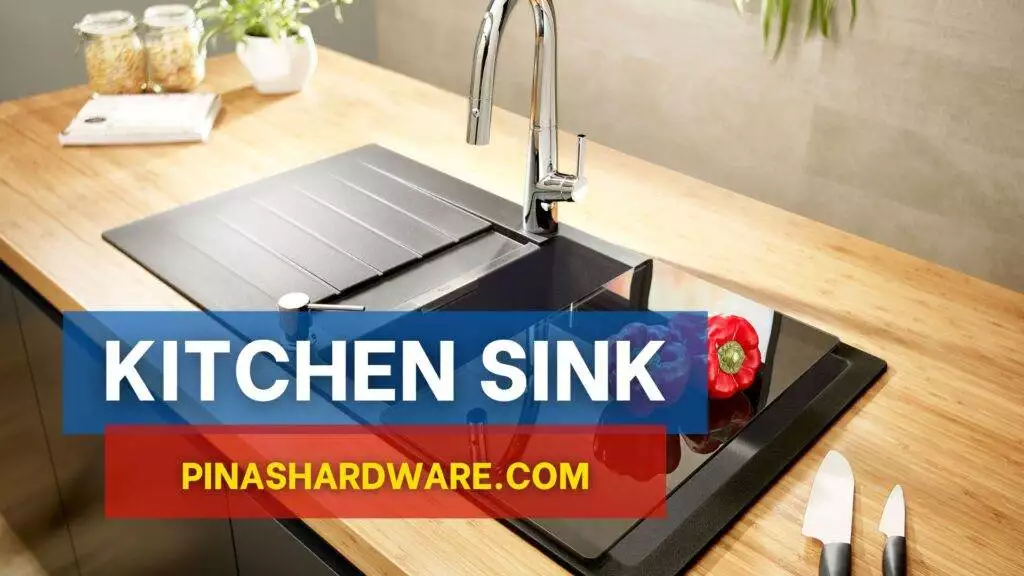A kitchen sink is a plumbing fixture usually found in kitchens to provide functional and versatile space for washing dishes, food preparation, cleaning, sanitation, and drainage. Kitchen sinks come in a variety of sizes, shapes, materials, and configurations which offers consumers options that can suit their design preferences and kitchen layouts.
Kitchen Sink Prices
Kitchen sink prices vary depending on the brand and size you choose. On average, they can range from ₱1,029.00 to ₱9,345.00.
| Details | Size | Price |
| Brad Kitchen Sink Bowl R-Drain with 1 Hole | 79cm x41cm x22cm | ₱3,610.00 |
| Brad Kitchen Sink Bowl 2 Bowl with 1 Hole | 68cm x 41cm x 22cm | ₱3,935.00 |
| Brad Kitchen Sink Bowl with 1 Hole SS | 82cm x 44cm x 22cm | ₱4,210.00 |
| Brad Kitchen Sink Bowl 1 L-Drain with 1 Hole | 79cm x41cm x22cm | ₱3,610.00 |
| Cool Double Bowl Kitchen Sink Satin | 780mm x 430mm x200mm | ₱2,490.00 |
| Cool Double Bowl Kitchen Sink with Nano | 82cm x 45cm x 22cm | ₱9,345.00 |
| Cool Single Bowl Kitchen Sink | 44cm x41cm x22cm | ₱1,029.00 |
| Cool Single Bowl Kitchen Sink with Nano | 79cm x 45cm x20cm | ₱6,900.00 |

Advantages of Kitchen Sink
Versatility – Kitchen sinks are versatile fixtures that provide a space for a wide range of tasks like dishwashing, food preparation, cleaning, and handwashing.
Convenience – Having a kitchen sink makes kitchen tasks more convenient as it provides a dedicated space for various activities which helps keep the kitchen organized and efficient at all times.
Hygiene – Kitchen sinks also facilitate proper sanitation practices by providing a convenient water source for washing hands, kitchen utensils, and surfaces, helping prevent cross-contamination and ensuring food safety.
Ease of Installation – Kitchen sinks are relatively easy to install, especially for experienced plumbers or DIY enthusiasts. They typically require basic plumbing skills and tools which makes them a straightforward addition to any kitchen renovation or remodeling project.
Disadvantages of Kitchen Sink
Maintenance Requirements – Kitchen sinks require regular cleaning and maintenance to prevent the buildup of food residue, grease, and bacteria that can lead to unpleasant odors, stains, and potential plumbing issues.
Clogs – Kitchen sinks are prone to clogs that are caused by food particles, grease, and other debris that can accumulate in the drainpipes. Regular use of drain strainers and proper disposal of food waste can help prevent clogs, but occasional maintenance is still necessary.
Limited Space – In smaller kitchens or tight layouts, the size and placement of the kitchen sink can cause limitations. A large sink can take up valuable space, on the other hand, a small sink may not be able to provide enough room for larger dishes and pots.
Video about Kitchen Sink
FAQs
What are the kitchen sinks?
Kitchen sinks are bowl-shaped plumbing fixtures that are commonly installed in both residential and commercial settings for dishwashing, washing hands, etc.
Which type of sink is good for a kitchen?
The best kitchen sink you could install in your kitchen is the stainless steel sink as it will provide a good balance between cost and durability.
What is the ideal kitchen sink?
An ideal kitchen sink should have an optimal range of 70 to 77 cm in length, width of 48 to 55 cm, and depth of 18 to 20 cm.
What is a typical kitchen sink?
The most common kitchen sinks used in both residential and commercial settings are stainless steel sinks with a standard size of 22 by 30 inches.
Why is the kitchen sink important?
They are essential in residential settings and are also commonly used in commercial settings because of the adequate space that they provide to accommodate all kitchenware, plates, and cutlery.


